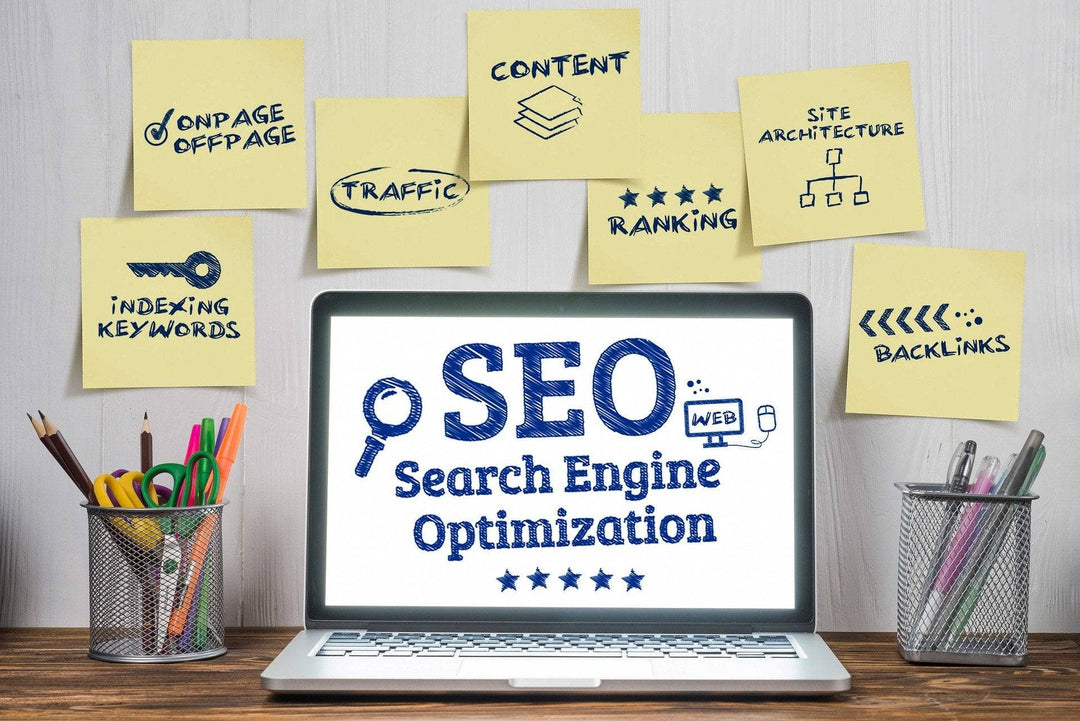Overview
TL;DR: This beginner's guide covers everything you need to know about setting up and marketing your Shopify store, including account creation, store customization, product addition, payment setup, and leveraging AI for enhanced user experience. Discover the benefits of Shopify, effective marketing strategies, and the importance of crafting a unique brand story as you embark on your eCommerce journey.
Frequently Asked Questions
1. What is Shopify?
2. Why should I choose Shopify for my online store?
3. How do I start setting up my Shopify store?
4. What steps are involved in marketing my Shopify store?
5. How can AI search personalization benefit my Shopify store?
Starting an online store can be an exciting yet daunting journey. With numerous platforms available, it can be tough to find the right one for your needs. Enter Shopify – a user-friendly, powerful tool designed specifically for eCommerce entrepreneurs. Whether you're looking to sell physical products, digital goods, or services, Shopify has everything you need to create a stunning online store. In this beginner's guide, we’ll walk you through the essential steps in getting started with Shopify, from setting up your store to mastering Shopify website design, all while harnessing the power of AI search personalization eCommerce.
Why Choose Shopify?
When embarking on your eCommerce journey, it’s crucial to choose a platform that offers the right balance of features, scalability, and ease of use. Here are some key reasons why Shopify is an excellent choice for beginners:
- User-Friendly Interface: Shopify’s intuitive dashboard makes it easy for anyone, regardless of technical skill, to manage their store.
- Flexible Pricing Plans: With various subscription plans, Shopify can accommodate both small startups and larger enterprises without breaking the bank.
- Customizable Shopify Website Design: Over 70 professionally designed themes make it easy to create a unique and visually appealing online store.
- Robust App Marketplace: Access to thousands of apps to enhance your store’s functionality.
- 24/7 Customer Support: Shopify offers round-the-clock support through chat, email, and phone, ensuring you have assistance whenever needed.
Getting Started: Setting Up Your Shopify Store
Step 1: Create Your Shopify Account
To begin your Shopify journey, the first step is to create an account. Visit the Shopify website and click on the "Start Free Trial" button. You'll have to input your email address, create a password, and choose a store name. Make sure to select a name that reflects your brand, as this will be an integral part of your store's identity.
Step 2: Set Up Your Store Preferences
Once you’ve created your account, you’ll be taken to your Shopify dashboard. Here, you can set up your store preferences by selecting your preferred currency and filling in your store address. This information will be essential for shipping and payment processing.
Step 3: Choose Your Shopify Plan
Shopify offers several pricing plans, including a basic plan to get you started. After your free trial, consider between the Basic, Shopify, and Advanced plans based on your needs. If you're just getting started, the Basic plan is usually a smart choice.
Step 4: Customize Your Shopify Website Design
The design of your Shopify store is vital for attracting and retaining customers. With Shopify, you can choose from a variety of themes and customize them to match your brand's aesthetics. Here are some steps to customize your store effectively:
- Select a Theme: Head to the Shopify Theme Store and browse through the available themes. Look for a theme that resonates with your brand and products.
- Customize the Theme: Use Shopify’s theme editor to alter fonts, colors, and the layout to make your store stand out.
- Add a Logo: Your logo is a representation of your brand – make sure it’s prominently displayed on your store. You can create a logo using various online tools or hire a designer.
- Optimize for Mobile: Ensure your design is responsive, as a large percentage of online shopping is done on mobile devices.
Step 5: Add Your Products
Now that your store is starting to take shape, let’s add your products. In the Shopify dashboard, navigate to the "Products" option and select "Add Product." Here are some tips for adding products effectively:

- High-Quality Images: Use high-resolution images that showcase your products in detail.
- Detailed Descriptions: Write informative and engaging descriptions to communicate the features and benefits of your products.
- Organize Your Collections: Group similar products together to enhance navigation on your site.
- SEO Optimization: Use relevant keywords in your product titles and descriptions to improve your shop’s visibility on search engines, including terms like “AI search personalization eCommerce.”
Step 6: Set Up Payments and Shipping
Once your products are in place, it’s time to set up payment and shipping options. Shopify supports various payment gateways including credit cards, PayPal, and other e-wallets. Here’s how you can make the most out of this step:
- Choose Your Payment Methods: Enable multiple payment methods for customer convenience.
- Define Shipping Rates: Decide whether to offer flat-rate shipping, free shipping, or calculated shipping based on location and weight.
- Set Up Tax Preferences: Be aware of the tax policies related to your product categories and regions where your customers are located.
Marketing Your Shopify Store
Leverage Social Media
Social media platforms are a powerful tool for driving traffic to your Shopify store. Create accounts on major platforms like Instagram, Facebook, and Pinterest to reach your target audience. Make sure to:
- Engage Authentically: Respond to comments and messages promptly to build customer relationships.
- Create Shareable Content: Share content that resonates with your audience to encourage shares and drive traffic to your store.
- Run Targeted Ads: Use paid ads on social media to reach specific demographics that align with your ideal customers.
Search Engine Optimization (SEO)
Optimizing your Shopify store for search engines is crucial for organic traffic generation. Here’s a checklist to enhance your site’s SEO:
- Include Keywords: Incorporate keywords such as "Shopify website design" and "AI search personalization eCommerce" in your product descriptions, blog posts, and meta tags.
- Optimize Page Speed: Ensure your site loads quickly by compressing images and minimizing code.
- Utilize Meta Tags: Craft engaging title and description meta tags to improve your visibility in search results.
- Blog Regularly: Create valuable content around your niche market to position yourself as an authority while driving traffic.
Enhancing Users’ Experience with AI Search Personalization
In today’s eCommerce landscape, personalization is key. By integrating AI search personalization into your Shopify store, you can tailor the shopping experience to individual customers. This technology analyzes user behavior and preferences to deliver tailored product recommendations, enhancing user experience and increasing conversion rates. There are several apps available in the Shopify app store that can help you implement AI-driven features to your online store.
Benefits of AI Search Personalization eCommerce
- Increased Engagement: Personalized recommendations keep customers engaged with your store, reducing bounce rates.
- Better Conversion Rates: When customers find products that match their interests, they are more likely to make a purchase.
- Enhanced Customer Satisfaction: A personalized experience leads to happier customers, fostering brand loyalty and repeat business.
Leveraging Analytics for Growth
As you start to make sales, understanding your data becomes essential for growth. Shopify offers built-in analytics tools that allow you to track key performance indicators such as traffic sources, sales, and conversion rates. Use this data to:
- Identify Trends: Monitor which products are selling well to optimize inventory.
- Understand Your Audience: Learn about the demographics of your customers to tailor marketing strategies effectively.
- Optimize Marketing Budget: Shift your marketing focus towards the channels that yield the best results.
Crafting a Unique Brand Story
In today's competitive market, establishing a strong brand identity is crucial. Tell your brand story on your Shopify store by sharing your journey, values, and what sets you apart from the competition. Your brand narrative will resonate with your audience, forming a deeper connection and encouraging loyalty.
Final Thoughts: Let the Adventure Begin!
Getting started with Shopify is an exciting journey toward building your own online business. By following the steps outlined in this guide, from setting up your store to optimizing it with powerful AI technology, you will be well on your way to creating a thriving eCommerce venture. Stay committed, keep learning, and don’t hesitate to ask for help when needed. The world of eCommerce awaits, and your potential is limitless! So roll up your sleeves and get ready to embark on this exciting adventure!
Linked Product

Shopify Basic Simple Site Package
The Shopify Basic Simple Site Package is designed for businesses seeking an efficient online presence without unnecessary complexity. This package allows you to effectively share your story and showcase your products while ensuring a smooth customer experience. It offers a straightforward solution for beginners looking to establish their first website with minimal expense.
View ProductDiscover the creations of a fellow Shopify or Wix store owner. Check out their online store here. Please remember that this is a promotional link, and we are not liable for the content of the linked store.






Leave a comment